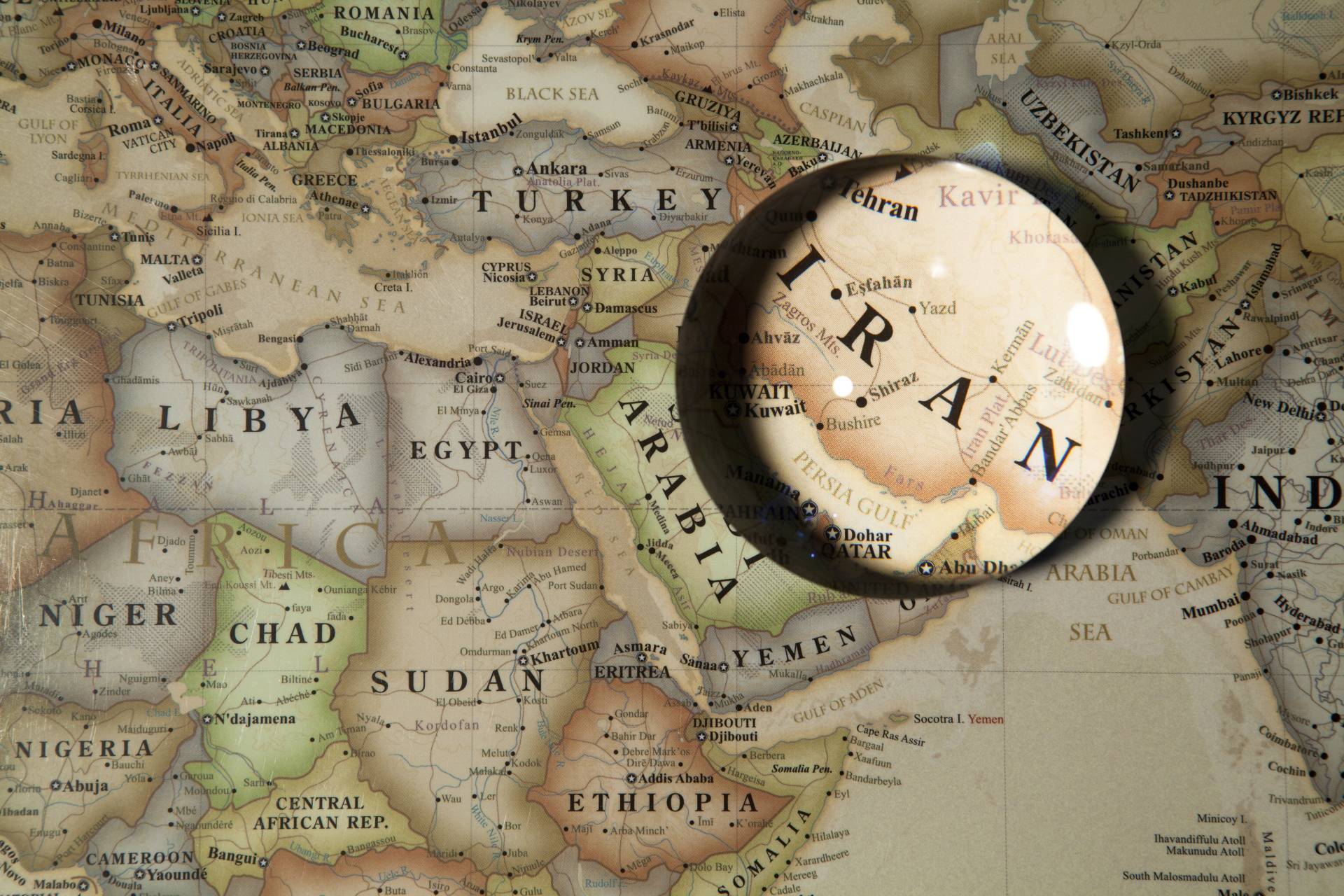The 1979 Iranian Revolution birthed a nuanced and intricate ideology, with the doctrine of Wilayat al-Faqih (Guardianship of the Jurist) at its core. This doctrine confers absolute authority to the Supreme Leader in religious and political realms, intertwining routine diplomacy with religious undertones and muddling the distinction between national interest and religious obligation.
Additionally, rooted in Twelver Shi’ism, Iran’s self-perception as the defender of oppressed Muslims globally is fueled by the anticipation of the twelfth Imam’s messianic return. This often translates into support for proxy groups and regional interventions.
Iranian ideology is deeply rooted in the nation’s historical and cultural identity. Iran sees itself as the inheritor of the longstanding Persian civilization, a proud nation with a rich heritage and a history of resisting foreign domination. This fosters a sense of exceptionalism, a conviction that Iran’s path is unique and its interests paramount, often leading to tension with other regional powers and the West. Furthermore, Anti-Zionism is deeply ingrained within the ideology, viewing Israel as an illegitimate entity occupying Palestinian land. This translates into strong support for Palestinian groups.
In the transition from a unipolar to a multipolar world Iran’s revolutionary ideology presents a destabilizing order and a direct threat to the existence of Israel.
Iran’s pivot and the shifting balance of power
The 1979 revolution in Iran, spearheaded by Ayatollah Ruhollah Khomeini, marked a watershed moment in the nation’s history. Though predominantly peaceful in its initial stages, the revolution involved protests, strikes, and civil disobedience. However, the Shah’s regime responded with harsh repression, leading to a significant rise in casualties among protesters. This ultimately contributed to the gradual disintegration of the Shah’s government.
The revolution culminated in the overthrow of the Pahlavi monarchy and the establishment of an Islamic republic based on the concept of Wilayat al-Faqih. This ideological foundation, enshrined in the 1979 constitution (amended in 1989), emphasizes principles such as justice, independence, self-reliance, resistance, and martyrdom.
Iran’s claim to legitimacy transcends the 1979 revolution, drawing its roots from millennia-long influential civilizations and empires. This rich history, encompassing the Elamites, the Achaemenids, Parthians, Sassanids, and Safavids, has indelibly shaped Iran’s cultural identity and instilled a profound sense of national pride. As the historical seat of power for empires stretching across the Fertile Crescent and into Central Asia, Iran’s past serves as a cornerstone for its aspirations for regional leadership, both historically and in the contemporary era.
This sense of historical grandeur further shapes Iran’s foreign policy, which has often clashed with that of Western powers and their regional allies. This has led Iran to pursue a Pivot to the East strategy, aimed at countering western pressure and sanctions imposed due to its nuclear program and regional activities. This policy gained momentum following the U.S. withdrawal from the 2015 nuclear deal (JCPOA) and the perceived failure of European signatories to uphold their commitments, leaving Iran economically isolated.
Iran’s deep-seated opposition to US interventionism in the Middle East stems from a perception that such policies destabilize the region and threaten its security and interests. Consequently, a key objective of the Pivot to the East strategy is to bolster Iran’s regional influence and establish itself as a leading power in the Islamic world, a position it believes reflects its historical legacy and rightful place.
While Iran promotes a transnational Islamist model, its influence is largely confined to Shia communities, which are minorities in most Muslim-majority countries. Nonetheless, Iran’s assertive foreign policy, including its support for specific regional groups, has been a factor in destabilizing the Middle East. Former Iranian foreign minister, M. Javad Zarif called this policy ‘sacrificing diplomacy for the military field’ in an interview with Saeed Leylaz.
The eastward gaze: Iran’s Pivot and the rise of an authoritarian Axis
Recent years have witnessed a growing convergence between Iran and other authoritarian regimes sharing a common opposition to Western influence. It describes what I call the Axis of Totalitarianism: a coalition of authoritarian regimes that challenge the democratic world order, encompassing Iran, China, and Russia. While not constituting a formal alliance, these countries exhibit strategic convergence and a shared desire to challenge the US-led unipolar world order.
This convergence manifests in various forms of cooperation. Notably, Iran and China have signed a significant 25-year strategic partnership agreement, facilitating substantial economic investment in Iran’s energy, infrastructure, and transportation sectors. This agreement underscores China’s growing economic influence in the region and its potential to provide much-needed economic support to Iran. Similarly, Iran and Russia have extended their existing 20-year cooperation agreement and engaged in joint military exercises, demonstrating their strategic coordination and willingness to collaborate on security matters. Notably, Iran has reportedly supplied Russia with ballistic missiles, further deepening their military cooperation in defiance of international sanctions.
A key driver of this convergence is the shared opposition to U.S. dominance and perceived Western interference in the region and globally. These countries view the current US-led world order as unfair and unjust, advocating for a multipolar world order that would redistribute power and influence. This shared objective fosters cooperation and strengthens their collective stance against perceived Western interventionism.
Beyond the core trio of Iran, China, and Russia, other actors with authoritarian tendencies have displayed varying degrees of alignment with this emerging axis. Notably, an Iranian official recently referred to the Taliban as part of an axis of resistance, suggesting a potential for cautious rapprochement between the two entities.
Similarly, Iran has been a staunch supporter of the Assad regime in Syria, providing both military and financial assistance that has been crucial in helping the regime regain control of territory from rebel groups. While not directly involved in the Middle East, North Korea’s aggressive stance towards the West has fostered diplomatic ties with Iran. North Korea maintains close alliances with Russia and China. Pyongyang has vocally supported Russia’s war in Ukraine, recognizing the annexed regions and parts of Georgia. In recent years, North Korea has participated in joint naval exercises with Russia and China in the Indo-Pacific region, suggesting a trilateral partnership aimed against the US and its allies.
Historically, North Korea and Iran have cooperated in the military and nuclear fields. This alliance dates back to the Iran-Iraq War in the 1980s when North Korea supplied Iran with weapons and technology. Since then, North Korea has aided Iran’s ballistic missile program development. Reports suggest joint missile development projects and technology transfers between the two countries.
The destabilizing messianic mission
Iran’s foreign policy is heavily influenced by its adherence to Twelver Shi’ism. This branch of Islam anticipates the return of the twelfth Imam, the Mahdi, to establish a global Islamic order. This eschatological belief imbues Iran with a sense of responsibility as the custodian of the Shia faith and champion of the oppressed, translating into a perceived mission to propagate Islam, defend the downtrodden, and pave the way for the Mahdi’s emergence. Furthermore, Iran views itself as the rightful successor to the Prophet Muhammad and his Ahl al-Bayt, the Prophet’s family, and claims to uphold the authentic interpretation of Islam embodied in their teachings and practices.
One prominent manifestation of Iran’s Islamic ideology in its foreign policy is the concept of resistance against perceived enemies of Islam and Iran. Iran positions itself as the leader of the axis of resistance, a network of state and non-state actors united in their opposition to the United States, Israel, and their regional allies. Proxy groups, sharing Iran’s ideological and strategic objectives of challenging the status quo and defending Shia interests, form a crucial component of this network.
These groups, including Hezbollah in Lebanon, Hamas and Palestinian Islamic Jihad in Palestine, the Houthis in Yemen, and various Shia militias in Iraq and Syria, receive Iranian support in the form of arms, training, financial aid, and political guidance. In return, they serve as force multipliers and instruments of deterrence for Iran, expanding its influence and leverage in the region. Often wielding significant political and social influence alongside their military capabilities, these groups maintain close ties to Iran’s Supreme Leader. They frequently coordinate their activities with the Iranian Revolutionary Guard Corps and the Quds Force, responsible for the country’s external security affairs.
The activities of Iran’s proxy groups have had a cascading and devastating impact on the stability and well-being of the Middle East. Their presence and involvement in regional conflicts have directly fueled humanitarian crises, such as:
— A 2021 report by the International Crisis Group documented how Hezbollah’s growing influence in Lebanon has hampered the formation of a stable government and hindered efforts to address the country’s economic crisis. In Yemen, the Houthi conflict has displaced over 4 million people internally, according to the UN Office for the Coordination of Humanitarian Affairs (OCHA), and plunged the country into the world’s worst humanitarian crisis.
— OCHA documented over 306,887 civilian deaths in the Syrian civil war, a conflict fueled in part by Iranian support for the Assad regime. Amnesty International has also accused various Iran-backed militias in Iraq of extrajudicial killings, torture, and arbitrary detention, further eroding respect for human rights and exacerbating sectarian divisions.
— The Internal Displacement Monitoring Centre (IDMC) estimates that over 12.4 million people are displaced across the Middle East and North Africa due to ongoing conflicts. The destruction of infrastructure and disruption of essential services, often a consequence of proxy group activity, further compound the humanitarian suffering in the region. OCHA reports that over 2.4 million children in Yemen lack access to safe water, sanitation, and hygiene due to the ongoing conflict.
The legacy of revolution: how Iran’s anti-Zionism threatens Israel
At the core of Iran’s anti-Zionism lies the fundamental rejection of Israel’s legitimacy as a Jewish state. This perspective views Israel’s establishment as a colonial project infringing upon Palestinian land and rights. Iran’s solidarity with the Palestinian cause, intertwined with both religious and moral imperatives as well as strategic and political interests, fuels its anti-Zionist stance. This manifests in Iran’s support for various Palestinian factions, particularly those advocating armed resistance against Israel, such as Hamas and Islamic Jihad.
Furthermore, Iran envisions a single, democratic state encompassing historical Palestine, where diverse communities coexist, effectively calling for Israel’s dissolution. This aspiration is further emphasized through Iran’s participation in the annual International Quds Day, a symbolic display of solidarity with the Palestinian struggle.
Iran’s anti-Zionism translates into tangible security challenges for Israel. Firstly, it underpins the formation of the Axis of Resistance alliance with Syria and Hezbollah. This alliance serves as a conduit for projecting Iranian power in the Levant region, posing a direct military threat to Israel’s northern border. Iran bolsters this alliance through extensive financial, military, and political support, enabling the development of missile and rocket capabilities, intelligence networks, and military infrastructure.
Iran’s own military presence in Syria, including bases and personnel stationed near the Israeli-occupied Golan Heights, further intensifies the potential for confrontation. This alliance has demonstrably materialized in several instances, including the 2006 Lebanon War, the ongoing Syrian Civil War with its spillover effects, and the 2024 Golan Heights incident.
Secondly, Iran’s anti-Zionist ideology drives its efforts to expand its influence and presence in other regional areas, including Iraq, Yemen, and the Gaza Strip. In these regions, Iran supports and arms various groups who actively attack Israel and its strategic allies. Iran has provided the Houthis in Yemen with missiles and drones used against Saudi Arabia and the United Arab Emirates, both considered strategic partners of Israel. Similarly, Hamas and Islamic Jihad in the Gaza Strip receive Iranian assistance in the form of rockets and funding, enabling them to engage in repeated cycles of violence with Israel, as exemplified by the 2024 Gaza War. Furthermore, Iran cultivates ties with various Shia militias and political parties in Iraq, some harboring animosity towards Israel and threatening potential attacks.
Thirdly, Iran’s anti-Zionism is intricately linked to its pursuit of a nuclear and missile program, raising concerns about the potential development and delivery of nuclear weapons. This program has been a focal point of intense international scrutiny. It led to negotiations, sanctions, and even sabotage attempts. Despite these pressures, Iran continues uranium enrichment beyond the limits set by the now-abandoned 2015 nuclear deal.
Furthermore, advancements in their missile program, encompassing the testing and development of various ballistic and cruise missiles with the potential to reach Israel and other regional countries, further escalate anxieties. This pursuit of nuclear capabilities, coupled with the possibility of transfer to proxies or allies, fuels fears of regional proliferation and potential military confrontations. Israel, viewing a nuclear-armed Iran as an existential threat, has repeatedly threatened preemptive strikes to prevent such an outcome and has reportedly carried out covert and overt attacks on Iran’s nuclear and missile infrastructure.
Iran’s Islamic revolution and its ambition to stand against the unipolar order, centering itself as the leader of the Islamic pillar of the multipolar world is a destabilizing order and an existential threat to Israel.
[Tara Yarwais edited this piece.]
The views expressed in this article are the author’s own and do not necessarily reflect Fair Observer’s editorial policy.
Support Fair Observer
We rely on your support for our independence, diversity and quality.
For more than 10 years, Fair Observer has been free, fair and independent. No billionaire owns us, no advertisers control us. We are a reader-supported nonprofit. Unlike many other publications, we keep our content free for readers regardless of where they live or whether they can afford to pay. We have no paywalls and no ads.
In the post-truth era of fake news, echo chambers and filter bubbles, we publish a plurality of perspectives from around the world. Anyone can publish with us, but everyone goes through a rigorous editorial process. So, you get fact-checked, well-reasoned content instead of noise.
We publish 2,500+ voices from 90+ countries. We also conduct education and training programs
on subjects ranging from digital media and journalism to writing and critical thinking. This
doesn’t come cheap. Servers, editors, trainers and web developers cost
money.
Please consider supporting us on a regular basis as a recurring donor or a
sustaining member.
Will you support FO’s journalism?
We rely on your support for our independence, diversity and quality.









Comment